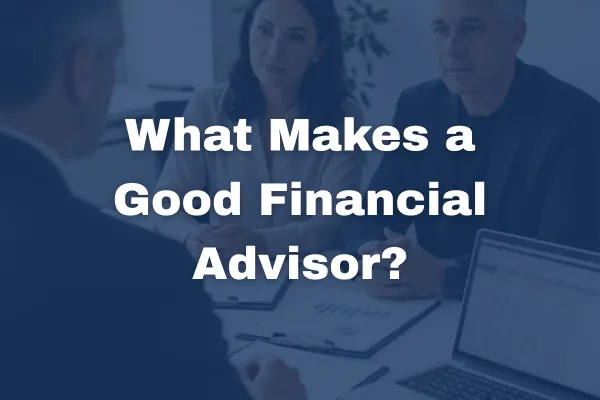
What Makes a Good Financial Advisor? The Institutional Standard
What Makes a Good Financial Advisor? The Institutional Standard
(An Institutional Approach to Evaluating Your Advisor)
“Institutions don’t rely on promises — they rely on process.” - Paul Powell
In most individual investor circles, the word “good” in reference to a financial advisor tends to mean personable, reassuring, or trusted. But in institutional settings—where billions are at stake and decisions are reviewed by boards, committees, and auditors—none of those attributes define quality.
The best advisors aren’t charming. They’re transparent.
And while personal connection may foster comfort, institutions don’t rely on chemistry. They rely on process.

Behavioral or Structural Analysis
For individual investors, the hiring and retention of an advisor is often shaped by affinity bias—our natural tendency to trust those who seem familiar, likable, or relatable. Advisors who communicate with warmth, respond quickly to questions, or offer simplified answers often earn higher subjective ratings from clients. But these impressions, while sincere, are not proxies for skill, alignment, or performance.
This is further compounded by framing bias: advisors typically present their value through polished narratives—client stories, performance anecdotes, or credentials—designed to frame perception in their favor. Without a structured framework to evaluate the underlying substance, investors are left to rely on trust rather than verification.
Underneath this dynamic lies an uncomfortable reality: many investors have no objective definition of what “good” looks like in an advisor.
Institutional Parallel
In the institutional world—endowments, foundations, pension plans—“good” is not left to interpretation. It is defined through measurable, reviewable criteria:
Fiduciary structure: Is the advisor contractually obligated to act solely in the client’s interest, without exception?
Compensation alignment: Is the advisor paid directly by the client, or incentivized by product sales or asset movement?
Process transparency: Are there documented investment procedures, clear reporting standards, and a formal review cadence?
Performance attribution: Can the advisor explain where returns came from—and whether those results reflect skill, strategy, or market exposure?
Accountability mechanisms: Is there an independent review process, and can decisions be evaluated with evidence over time?
These aren’t aspirational ideals. They are operational requirements. No committee would retain an advisor simply because they’re “nice” or “responsive.” Institutions may appreciate good communication—but they hire for structure and results.
Practical Application
Individual investors can adopt the same principles—without needing an investment committee. The process begins by shifting the question from “Do I like this advisor?” to “How is this advisor compensated, evaluated, and accountable?”
Here’s how to translate institutional discipline into personal decision-making:
Ask structural questions before personal ones. Begin with:
“Are you always acting as a fiduciary, across all services?”
“How are you compensated, and by whom?”
“How do I know if your strategy is working?”Expect documentation. A good advisor should be able to provide investment policies, review schedules, and performance reports—not just market commentary.
Define success in advance. Institutions don’t judge advisors solely by returns—they evaluate process consistency, risk exposure, and alignment with stated objectives. Individual investors can do the same.
Look for verifiability. Can the advisor’s claims be backed up by third-party data or independent benchmarks? If not, the decision is based on personality, not evidence.
By reframing the definition of “good,” investors move from a subjective, emotionally driven model to one rooted in clarity and control.
Closing Reflection
The challenge is not that investors choose the wrong advisor—it’s that they’re rarely given the tools to choose differently.
But professional discipline isn’t reserved for institutions. It’s available to any investor who wants to move from assumption to analysis, and from trust to verification.
That’s the foundation of informed decision-making.
For a practical tool to apply this thinking, explore the Financial Self-Defense Checklist—a structured way to evaluate advisors with the same clarity institutions require.